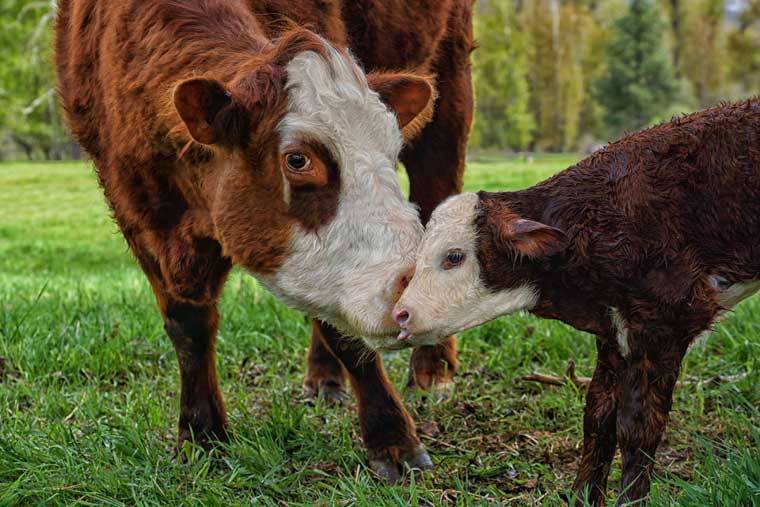When you think of colors in the animal kingdom, the vivid hues of tropical birds or the blazing patterns of a butterfly might come to mind. Yet, what if I told you there are creatures who perceive the world in a completely different palette? Imagine a jubilant field filled with daisies and sunflowers, where countless bovines roam. As these gentle giants graze, what if we considered not just their size and muscle but also their unique perspective on color? Today, we delve into the fascinating world of colorblind creatures, specifically examining the bovine that cannot see red. Are we, in our colorful existence, missing out on what these creatures experience? What challenges does this present for them and our interactions with them?
Bovines, particularly cattle, are remarkable animals in agriculture and ecological systems. But here’s the intriguing twist: they are red-green colorblind. This raises an interesting question: how does this limited color perception impact their behavior and their interactions with their environment? To begin our exploration, we need to understand how color vision works in the animal kingdom.
Animals perceive colors through photoreceptors known as cones. Humans possess three types of cones, allowing us to see a spectrum of colors, including reds, greens, and blues. In contrast, many mammals, including cows, are dichromats; they have only two types of cones. This means that while they can perceive blues and yellows, the vibrant reds and greens that delight our eyes appear muted or altogether invisible to them.
What implications does this have for the bovines’ daily lives? For starters, their inability to see red could influence their foraging behaviors. In a pasture where grass shows a spectrum of greens but might have patches of deep red clover, these bovines may miss out on a nutrient-rich food source simply because they cannot see it. The question arises: are these creatures at a disadvantage in terms of their diet? Perhaps they have evolved clever strategies to compensate for their limitations, utilizing their acute sense of smell and hearing to navigate their environment effectively.
Beyond foraging, consider how their colorblindness might affect their social behavior. Cows are known for their complex social structures and relationships within herds. Communication is often conveyed through body language and vocalizations. But do the nuances of color play a role in these interactions? If a cow associates particular colors with safety or danger, will a red object—a vibrant piece of farm machinery, for instance—go unnoticed, potentially leading to unforeseen challenges? It’s a realization that could change how we manage and interact with cattle.
Moving beyond the realm of color perception, let’s explore how humans can engage with these creatures more effectively. Often, farmers and animal caretakers adorn the barns or pastures with colorful items, believing that bright colors attract attention or help in herding. However, is it possible that such vibrant displays could confuse the cattle instead? In their world, where reds and greens fade into a monotone landscape, understanding their visual limitations can profoundly affect our practices. A gentle barn painted in soothing blues and yellows might provide a more inviting atmosphere than a gaudy facade leading to visual overstimulation.
This raises further questions about the broader implications of color perception in the animal world. Many species exhibit a degree of colorblindness, though the extent and nature vary. For instance, dogs primarily see a blend of yellows and blues, lacking the reds on the spectrum. How does this shape their interaction with the world around them? Do we, as loving pet owners, also need to consider the visual limitations of our furry friends when selecting toys or training tools?
Moreover, let’s reflect on the domain of conservation. As we delve into habitats where various species reside, understanding their unique sensory perceptions becomes critical. How can we bridge the gap between our colorful world and theirs? Would tailored environmental designs benefit species that cannot see specific color spectrums? A thoughtful approach to conservation encompasses not just the preservation of habitats but also understanding the ecological needs of creatures that share our planet with such starkly different perceptions.
In this exploration, the imaginative question continues to linger. If color is an essential marker of safety and nourishment in our world, how do we negotiate the complexities of perception in species that see the world so differently? What creative adaptations might arise if humans and animals cultivated a deeper understanding of each other’s experiences? As we contemplate these scenarios, we’re nudged towards innovative solutions—designing habitats and farming practices that acknowledge and embrace these differences.
In summary, the bovine who cannot see red illustrates a broader narrative of survival, adaptation, and interspecies understanding. As we strive for greater harmony in our interactions with the animal kingdom, let us remain playful and curious, asking the difficult questions about perception and experience. The world is rich with colors, scents, and sounds; understanding how our fellow creatures navigate their realities can broaden our own perspectives and transform our practices. Shall we step into their shoes, or rather, their hooves, to appreciate life in a palette beyond our imagination?
